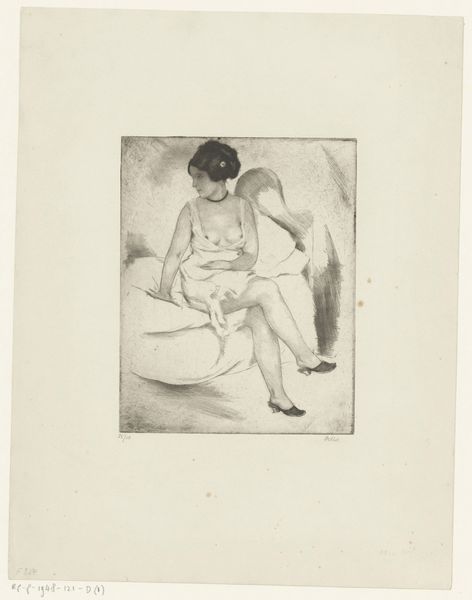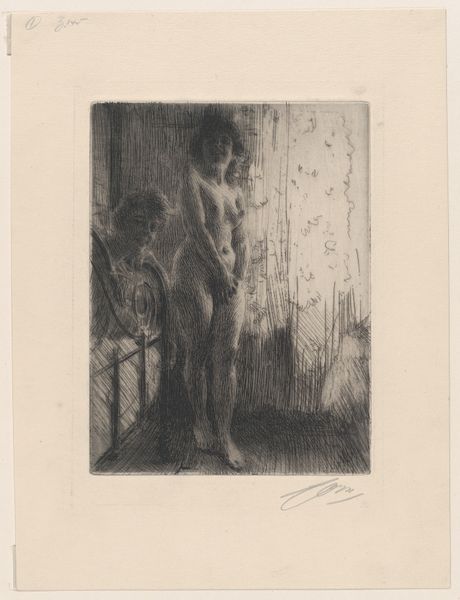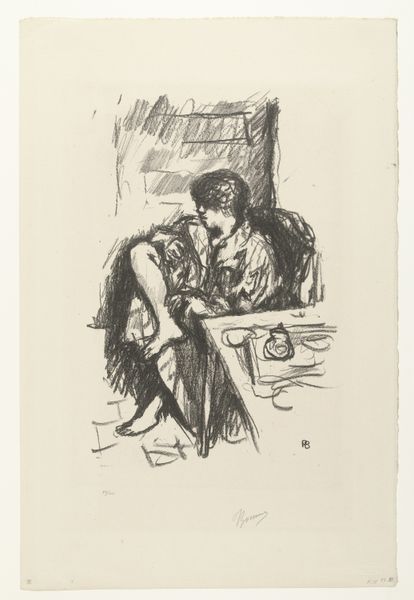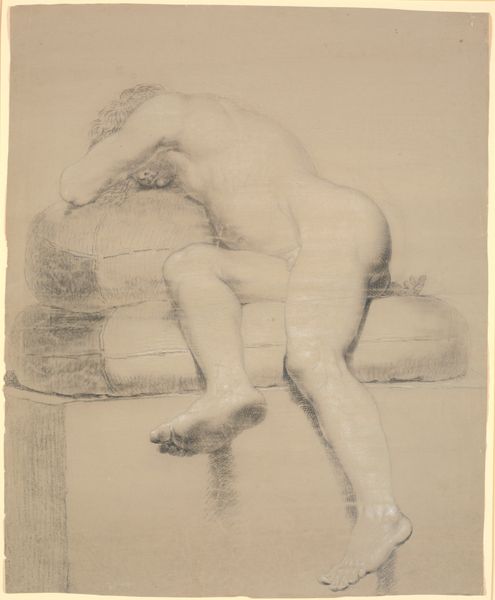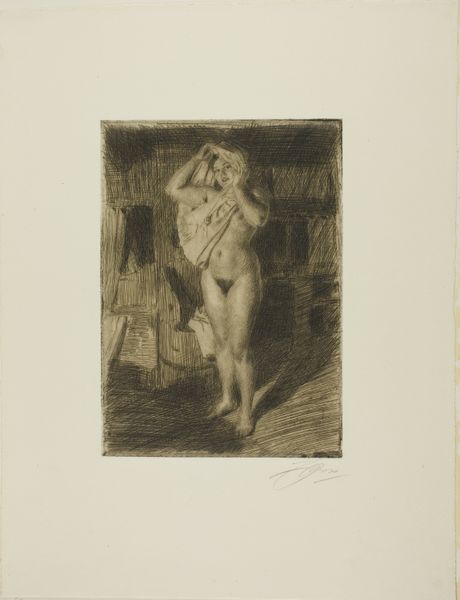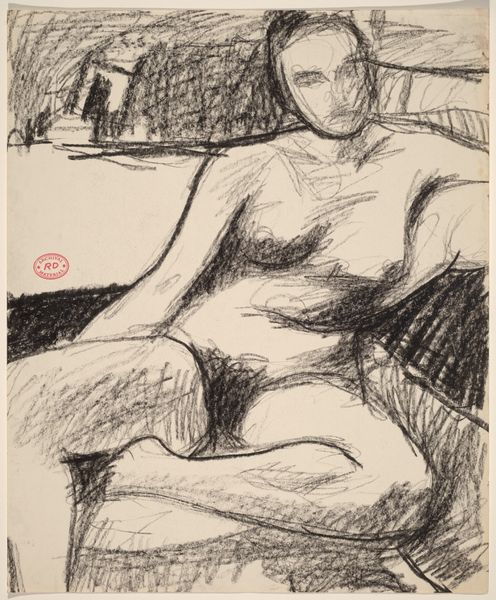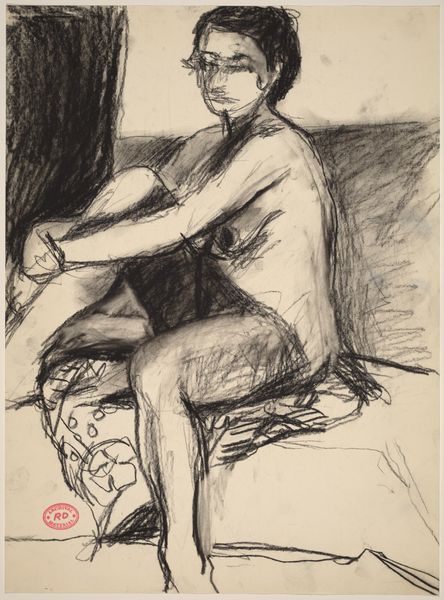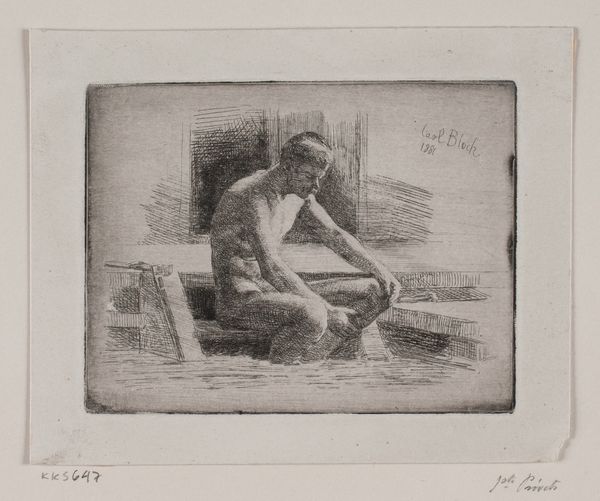
Dimensions: Plate: 6 5/16 × 4 3/4 in. (16 × 12 cm) Sheet: 14 1/8 × 8 3/8 in. (35.8 × 21.3 cm)
Copyright: Public Domain
Curator: This is Anders Zorn’s etching from 1910, “Model Reading,” which you can find here at the Met. Editor: It's stark, isn't it? Raw even. It feels like a stolen moment, a glimpse into something private. Curator: Exactly. The subject, a nude woman, is depicted entirely unidealized, in a completely casual, unguarded moment while she's reading in bed. Editor: The cross-hatching adds to that feeling, that sketch-like quality. It's as if he just dashed it off, but with such intimacy. Curator: Well, Zorn was a master of capturing light and shadow through etching. The bold lines, the contrast, emphasize her form without romanticizing it. We can consider how Zorn here engages with contemporary social shifts in how women were being perceived. Editor: I see a sort of melancholic grace in the way she's framed, though. She's not posing, there is something in the texture, in the dark and light play. Curator: Absolutely. You might see echoes of Degas, even Manet, but with Zorn's distinctly Swedish sensibility. He was known for depicting everyday life. And this etching, rather unusually, complicates conventional gendered portrayals of women in art at the time. Her act of reading situates her outside simply an objectified, decorative vision. Editor: It makes you wonder what she’s reading! It almost shifts the power dynamic – she's not passively waiting; she’s engaged. Curator: Precisely. Her inward focus really pushes back against this pervasive, male-dominated gaze typical in the period's nudes. She exists within her own space, literally and metaphorically. It prompts a viewing lens rooted more in the ethos of observing lived experience. Editor: It is that resistance that holds all of my attention. This image becomes charged with stories and emotions—it makes me pause and consider. Curator: Indeed. Zorn invites us to observe the model's world. A seemingly simple sketch, it sparks conversations about intimacy, social positionality, and power dynamics within visual art. Editor: A quiet revolution rendered in stark lines. I'm leaving with so many interesting questions, actually.
Comments
No comments
Be the first to comment and join the conversation on the ultimate creative platform.

